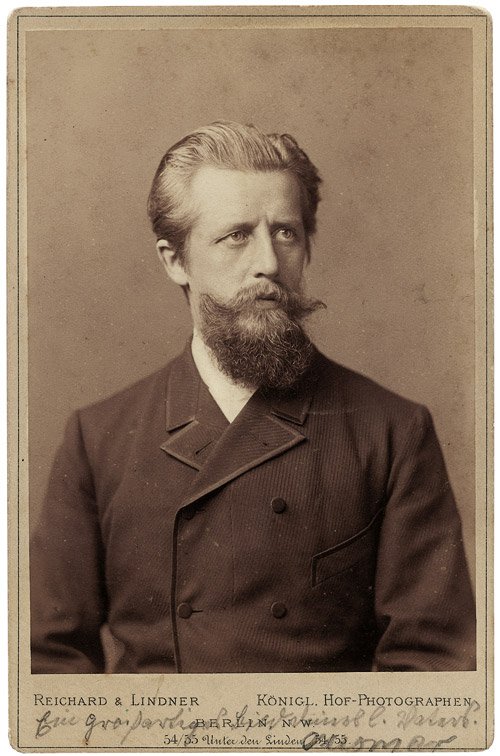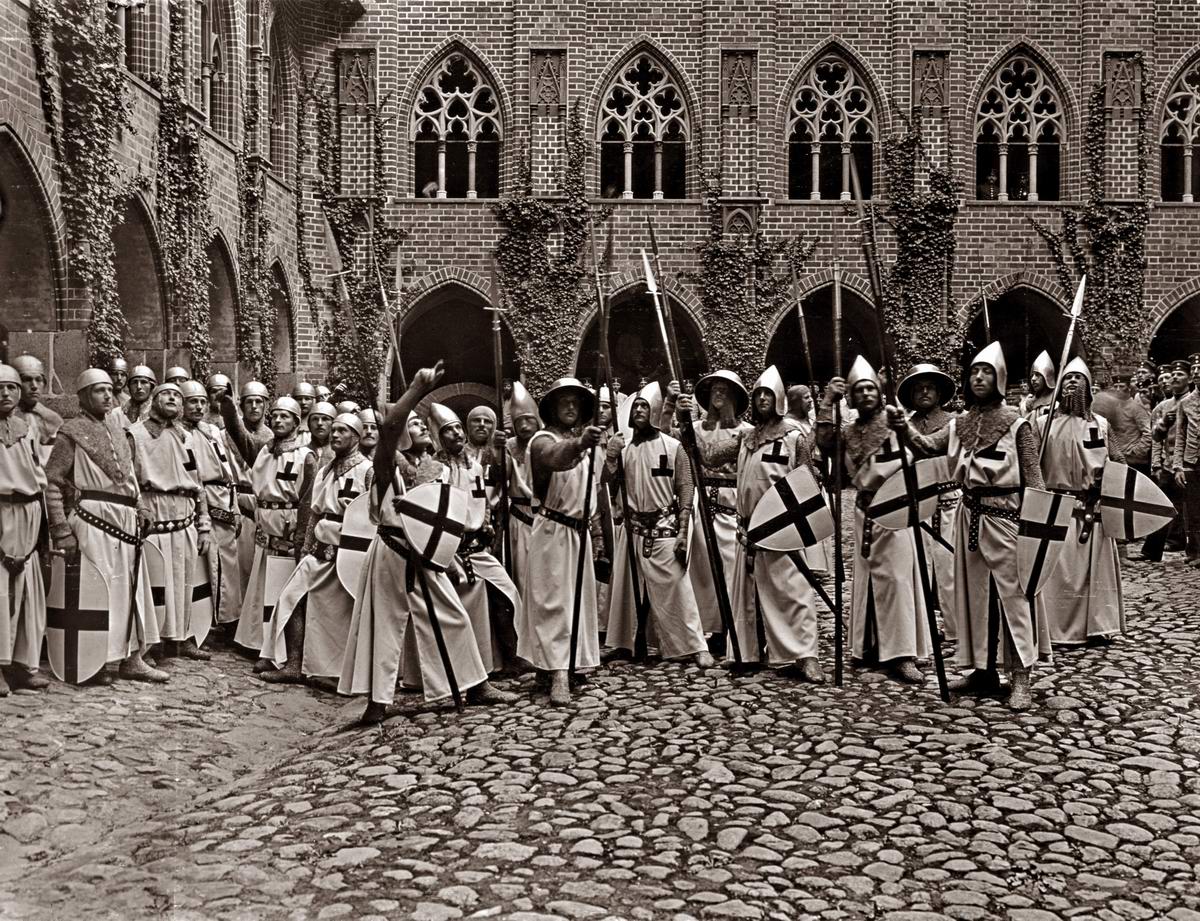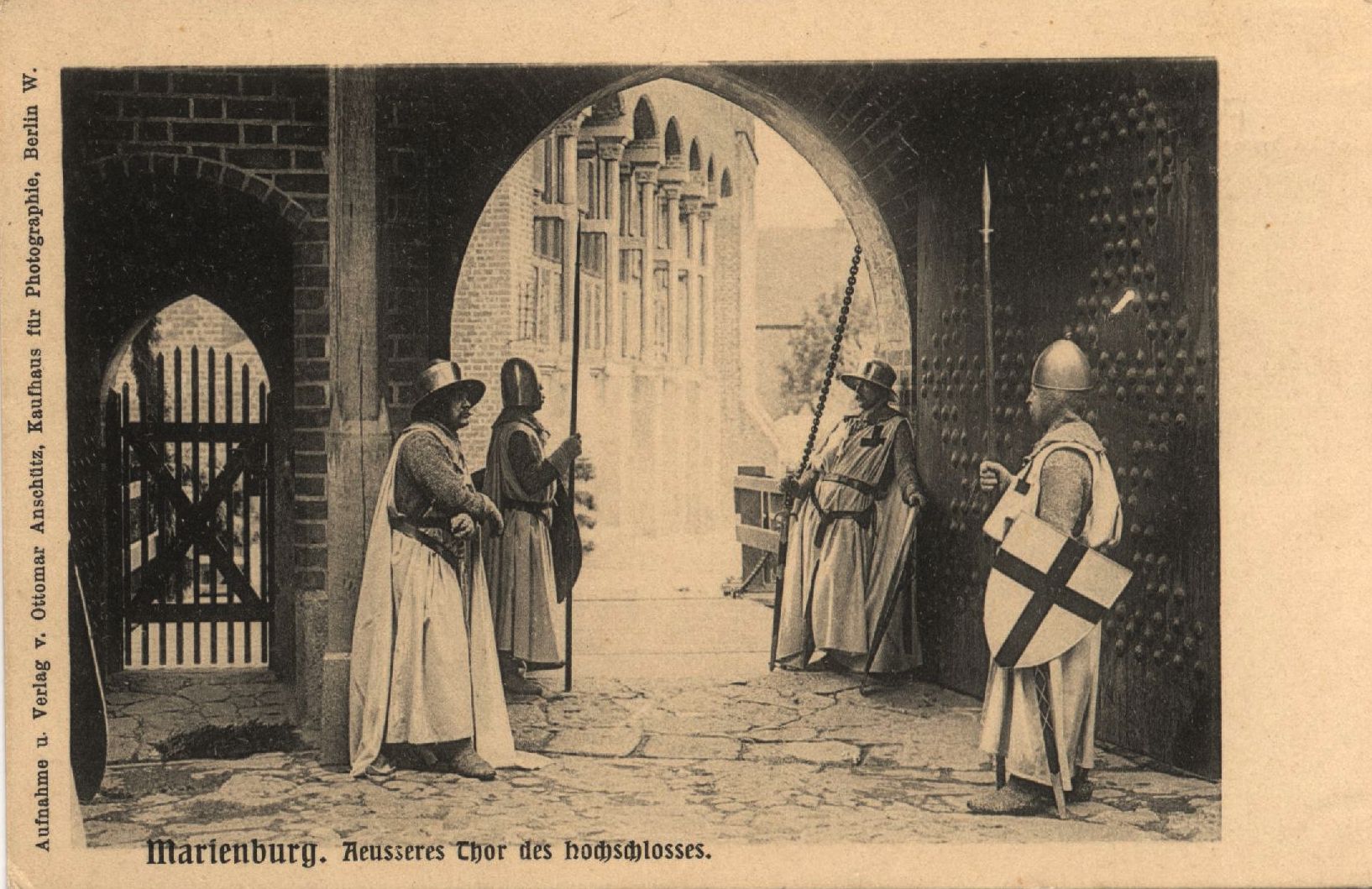Ottomar Anschütz, one of the pioneers of European photography and cinematography, born in Leszno in Greater Poland. At the end of his professional life became associated with the Malbork Castle, thanks to Emperor Wilhelm II himself, whom he served as a court photographer illustrating military maneuvers or journeys of the imperial family, and was also considered to be for the private photography tutor of Empress Augusta Victoria.
In his youth, in the years 1864-1868 he practiced with several photographers, incl. at the atelier of Maksymilian Fajans in Warsaw, Ferdinand Beyrich in Berlin then with Franz Hanfstaengel in Munich and Ludwig Angerer in Vienna. In 1879 he took over the family photography workshop, taking standard portraits but also experimenting with equipment that allowed him to photograph animals and people in motion. Around 1882 the focal plane shutter with very fast opening times up to 1/1000 of a second was invented. This method of photography was then commonly called momentary photography. A few years later (1890), the entrepreneur Paul Goerz obtained a patent for the production of cameras with Anschütz slotted shutter. In the middle of the 1880s, while still in Leszno, together with his friend Johann Schneider, an organ builder, Anschütz constructed another machine, this time for viewing figures in motion, which they called the elektrischer Schnellseher (electric pressure cooker) or more expertly the electrotachyscope. Thanks to this machine, it was possible to watch birds and people in motion. This device consisted of a steel wheel placed on a rail car. The photographer placed glass mini-glasses with frames that registered the subsequent phases of movement, around the circumference of the circle. By making them spin the viewer had the impression of participating live in the event. The first such projection took place in Berlin in 1887 before William II and showed the autumn maneuvers of the cadets of the Military School in Hanover. A few years later, the photographer moved from Leszno to Berlin, where he set up a private atelier at Leipzigerstrasse 115/116 and then a shop for amateur photography (Ottomar Anschütz G.m.b.H. Kaufhaus für Amateur-Photographische Kunstanstaltt für Aufnahmen aller Art).

Source:
https://upload.wikimedia.org/wikipedia/commons/1/1c/Ottomar_Ansch%C3%BCtz.jpg (accessed on May 13, 2020).
Anschütz came to Malbork for the first time at the beginning of June 1902 to record in photographs the opening ceremony of the castle church on May 5th and the closing of the 20 years of restoration work in the castle of the conservator Conrad Steinbrecht. The ceremony was extremely colorful and magnificent. It was honored by the soldiers of the 152nd Malbork Infantry Regiment. Of the German Order, who assisted the guests in the guise of Teutonic knights and created an interesting staffage for the photographs. Some of the frames were included in the photo album of the reconstruction of the castle from 1902 (Fig. 1), others were published by the photographer as postcards (Fig. 2). Over the next few years Ottomar Anschütz, together with his son Guid, collaborated with the castle photographer Carl Kuhnd, taking some photos for the annuals (fig. 3) and a whole series of postcards showing the beauty of the castle interiors and collections. In 1904, at the request of the Castle Reconstruction Board, the photographer made 48,000 postcards with castle panoramas. He also made a number of postcards in thematic series: the castle church with views of the interior and its mobilia, the mosaic figure of the Madonna with the Child, the Grand Master’s Palace, the gate leading to the High Castle, the cloisters, the convent’s kitchen, the convent’s refectory, the apartment of monastic dignitaries and the chapter house. He also published small photo albums, e.g. Die Marienburg i. Pr. Das ehemalige Haupthaus der deutschen Ordensritter (Malbork. Former headquarters of the Knights of the German Order), which contained about 30 photographs. Even before the Gdańsk para-audiovisual show entitled Die Ordensritter und ihre Burgen. In Bild und Wort (Teutonic Knights and their castles. In pictures and words) on the electrotachioscope, which took place on November 25th 1905 in the Manor of the Brotherhood of St. George. Anschütz planned a pre-premiere show at the Summer Refectory at the Grand Master’s Palace at the Middle Castle. However, there is no information as to whether it took place as scheduled on April 19th 1905. Until a few years after the death of Ottomar, his son Guido carried out orders for photographic works, but it seems that after 1909 this cooperation ceased, although it is not yet confirmed by sources.
(compiled by Dr. B. Pospieszna)

Ryc. 1. Marienburg Baujahr 1902, il. 22.

Ryc. 2. Pocztówka ze zbiorów Muzeum Zamkowego w Malborku.

Ryc. 3. Marienburg Baujahr 1908, il. 22.
Also read:
More on the topic in the publications:
B. Pospieszna, The Malbork Castle through the lens of the company “Ottomar Anschütz G.m.b.H.”, Studia Zamkowe, 3 (2009), pp. 82-92.
http://sklep5549667.homesklep.pl/pl/p/Studia-Zamkowe%2C-tom-III/144
B. Pospieszna, Pre-war photographic archive at the Malbork Castle, [in:] Recalling History. The fate of the Malbork collections after the Second World War. Catalog of the exhibition at the Castle Museum in Malbork, ed. A. Siuciak, Malbork 2015, pp. 209−219 http://sklep5549667.homesklep.pl/pl/p/PRZYWRACANIE-HISTORII/295
B. Pospieszna, The Photographic Archive of the Castle Reconstruction Authority in Malbork (1882-1920), [in:] Praeterita Posteritati. Studies in the history of art and culture offered to Maciej Kilarski, ed. M. Mieraelński, Malbork 2002, pp. 359-382.
